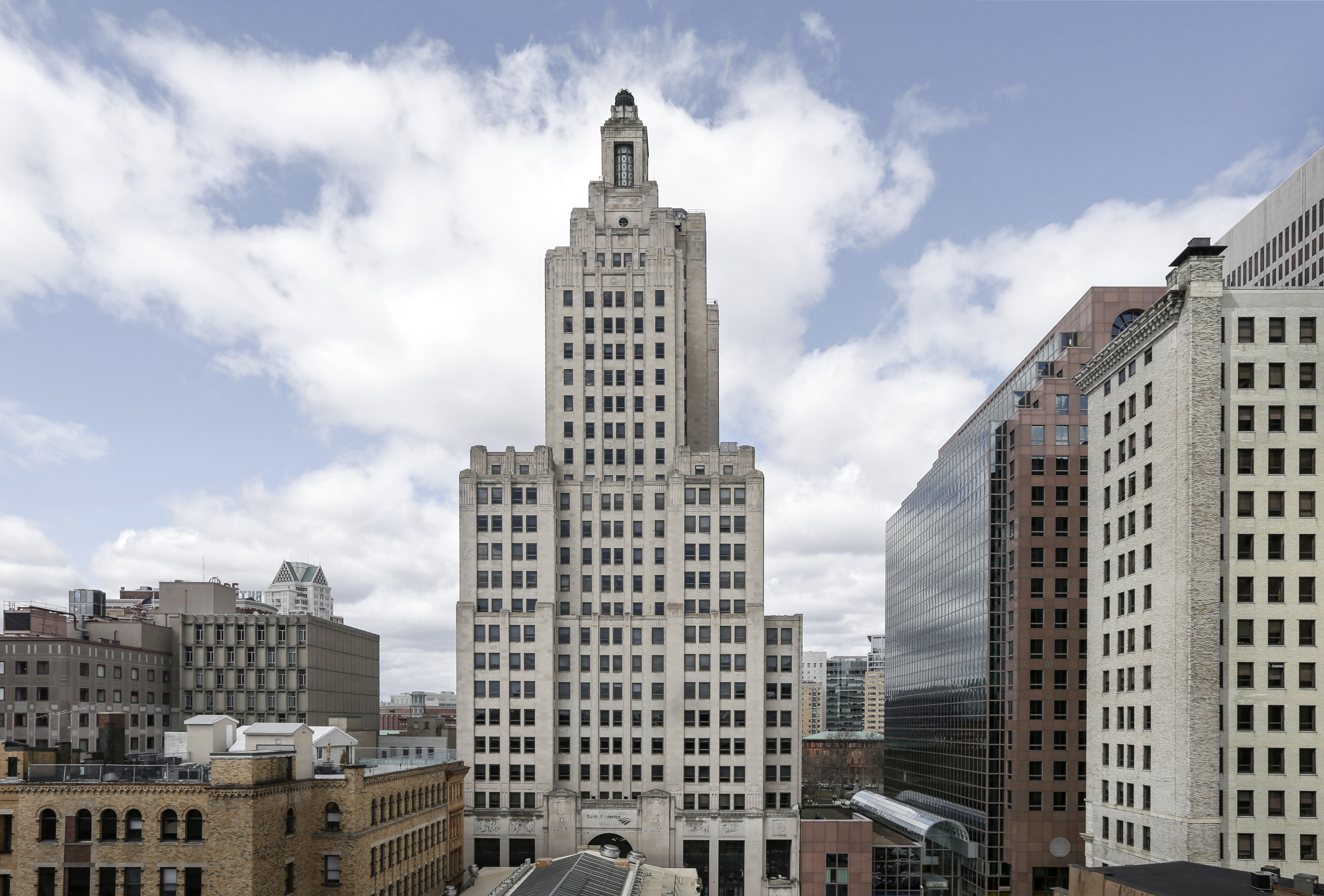The Industrial Trust Building is an Art-deco skyscraper designed between 1925 and 1926 by Walker & Gillette, in association with Martin & Hall, and built between 1927 and 1928 in Providence, RI.
Industrial Trust Building is not the only name you might know this building by though. It is common for companies to want to attach their names to iconic buildings when they move in, or for the general public to come up with nicknames, and this one is no exception. The building has changed names several times over the years, and is also known as:
- Superman Building.
- Industrial Trust Tower.
- Fleet Bank Tower between 1982 and 2004.
- Bank of America Building between 2004 and 2008.
Its precise street address is 111 Westminster Street, 55 Kennedy Plaza, Providence, RI. You can also find it on the map here.
The Industrial Trust Building is a structure of significant importance both for the city of Providence and the United States as a nation. The building embodies the distinctive characteristic features of the time in which it was built and the Art Deco style. Because of that, the Industrial Trust Building was officially included in the National Register of Historic Places on October 31st 1984.
The building is popularly known as the "Superman Building" due to its resemblance to the Daily Planet newspaper headquarters in the 1950s American television series, The Adventures of Superman.


